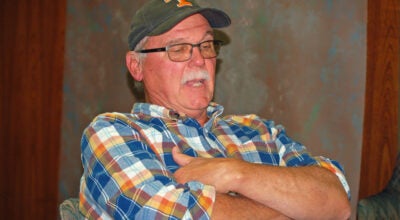Don’t fawn over that fawn
Published 7:32 am Monday, June 30, 2014

Wildlife officers responded to a call about a fawn lying outside of the public works building in Oak Ridge. in spite of concerned citizens with good intention wanting to help, the fawn was not interfered with and was rejoined with its mother upon her return.
Residents are being asked to think twice before “rescuing” a deer fawn they think has been abandoned.
“We are getting overrun with calls on fawns,” said Tennessee Wildlife Resources Agency Officer Dennis Ward. “People mistakenly grab them up thinking they are orphaned, but that is just not the case.”
Once the TWRA responds to a call on an “orphaned” fawn that has been rescued, Ward said the animal is taken to a wildlife rehabilitation center. Here in East Tennessee that center is Wynnwood Wildlife Rehabilitation Center, which is located in Carter County.
“Our rehabilitator there in Carter County is at capacity and they are the only facility in East Tennessee,” he said.
Ward said does will lay their fawns down during the day so that the mother can forage for survival needs. “The does have to be able to move quickly to find food and water,” Ward said. “The fawns, especially early on, cannot keep up.”
The does will return to the fawn throughout the day to check on it, but the fawn can survive several hours on its own, according to Ward. He said it is also not uncommon for a mother to bed her fawn down in the same location over multiple days. “People believe that because it is in the same place or close to the same place that it has been abandoned,” Ward said.
According to information from the TWRA, does spend little of their time during the day with their fawns.
“The main points that I consider are that the doe spends less than four hours a day with the fawn and while she may look like a bad mother, in nature this is a very successful strategy,” said TWRA Wildlife Officer Jason Lankford, who works in Anderson County. “She’ll visit the fawn when it needs it, otherwise it will sit contently looking abandoned but nothing is further from the truth. When a fawn is picked up, its chances of survival and ever being reaccepted into the deer herd drop dramatically.”
Ward said the TWRA is encouraging residents to leave the fawns in the wild for the safety and welfare of the animal. “Unless they are absolutely positive leave it alone, because the doe will come back and get it,” he said. “Once they have been cared for by people it is next to impossible for them to become a wild animal again.”





